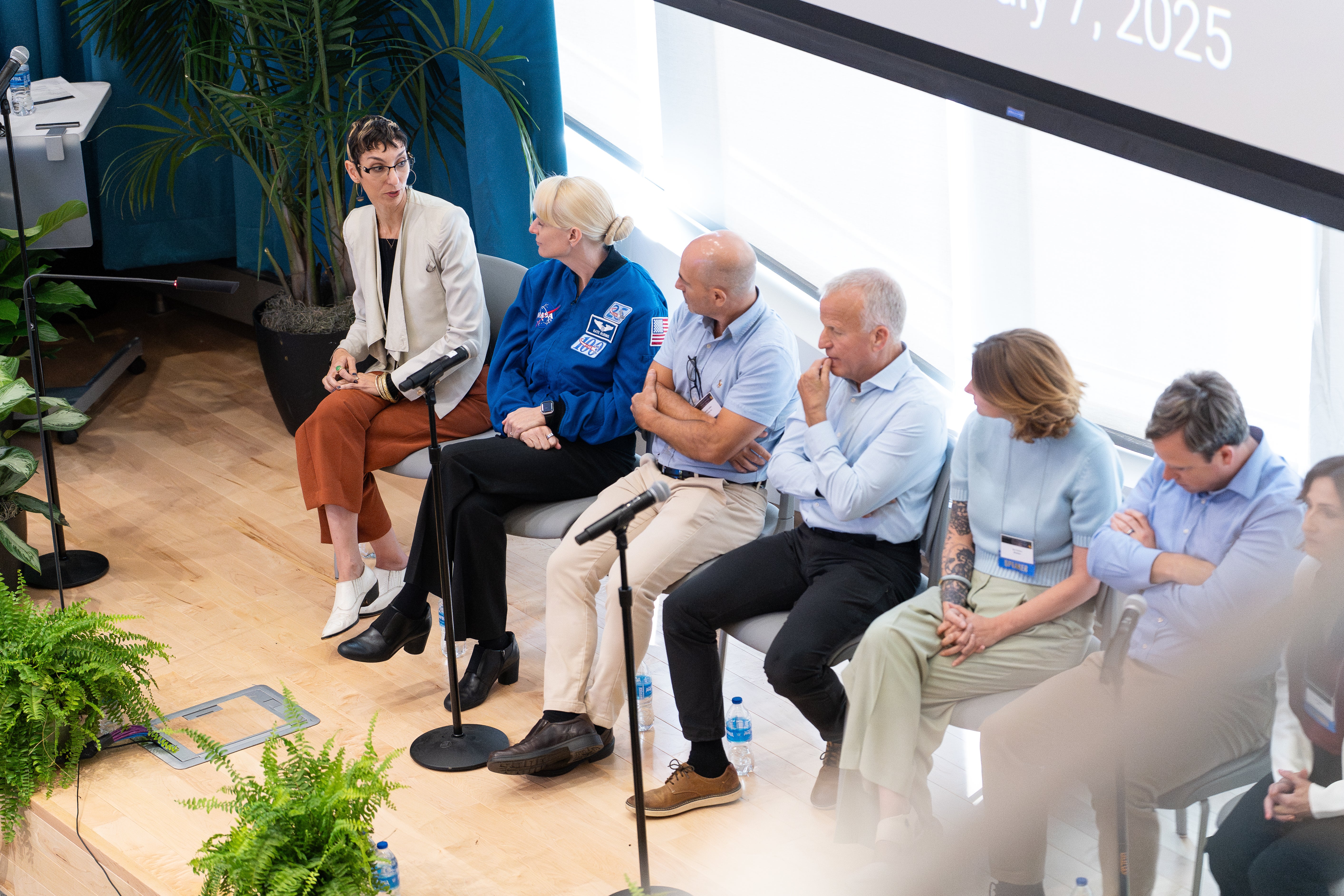
By Andrew Doerfler
Photography by Rayni Shiring/University of Pittsburgh
Astronauts, scientists, entrepreneurs and other forward-thinking experts shared their visions of what the rapidly growing field of space biomedicine means for humanity at “From Space to Earth—Biology as the Bridge,” a symposium hosted by the University of Pittsburgh School of Medicine on July 7.
View the livestream below:
The University has positioned itself at the forefront of the new space age with its Pitt Space initiative, which brings together researchers across disciplines to make deeper explorations into the cosmos possible.
Pitt’s Center for Space Biomedicine, launched last year, is finding ways to allow humans to withstand challenges like radiation exposure and bone loss that the space environment poses to health, especially during the longer-term missions that space agencies and companies are planning. Space stresses the body in ways we don’t see on Earth, leading to new biomedical insights.
“A leading biomedical research institution needs to be prepared for humanity’s needs in the 21st and 22nd century,” said Anantha Shekhar, senior vice chancellor for the health sciences and John and Gertrude Petersen Dean, School of Medicine, in opening remarks in the West Wing of Alan Magee Scaife Hall. “We have to start thinking about extraterrestrial environments to be successful.”
Afshin Beheshti, director of the Center for Space Biomedicine and formerly of NASA Ames Research Center, pointed out that space offers an accelerated model for diseases and processes like aging, and advances and interventions designed for astronauts can translate directly back to the clinic. “Everything we're doing in space really impacts what happens here on Earth,” he said. His own work, for example, explores ways to protect mitochondria from radiation exposure, offering wide-ranging benefits for mitochondrial diseases and immune diseases.
Describing the advances from the last five years of research on the International Space Station, NASA astronaut and microbiologist Kate Rubins emphasized that space missions drive innovation in creating robust, resilient and compact devices that could make biomedical research and health care more accessible.
“Think about where you could use that kind of hardware on Earth,” she said, pointing to rural clinics, low-resource countries and military settings.
The recent availability of low-cost genome sequencing has brought new insights into how the body handles spaceflight, Chris Mason, professor of genomics, physiology and biophysics at Weill Cornell Medicine, said at the symposium. His team has found that astronauts’ telomeres—the protective caps on chromosomes that tend to shorten as people age—actually lengthen on average in space. Their DNA repair pathways also tend to be upregulated. Learning how and why could present potential approaches to treating cancer on Earth.
New ways to analyze data will be essential for driving the field forward at the rate needed to reach new destinations like Mars in the next 10 to 20 years, as highlighted by Vishnu Vardhan, cofounder of the AI company Vizzhy Inc., and Sylvain Costes, the company’s chief data and AI officer. Vizzhy is developing space twin simulations to learn about longevity and resilience in spaceflight. Pitt recently partnered with Vizzhy to form Pitt-Vizzhy Longevity Labs and to develop a medical AI platform called GAINMED.
The commercial spaceflight boom presents even more opportunities to study space biomedicine, as more people who haven’t spent their lives and careers training for spaceflight head into orbit. John Shoffner, a longtime extreme athlete and pilot, shared his experience becoming a commercial astronaut for the first time to pilot the space infrastructure developer Axiom’s Ax2 mission. He’s been fascinated by space since seeing early NASA missions on TV as a boy in the 1960s, and he said further advances will continue to inspire young people.
"It's a driver that's going to encourage the next generation of people coming up behind you to continue on the quest you're so boldly going on today,” Shoffner said.
Pitt is poised to turn that inspiration into education. The University is partnering with other leading universities, space agencies, nonprofits and companies for a cross-institutional and global education initiative that will educate the next generation of space biology and biomedicine scientists through student exchanges, joint seminars, integrated curricula and coteaching.
"We want to harmonize education of space biomedicine around the world, and Pitt will be the hub of that,” Beheshti said.
Other speakers at the symposium included MIT astrophysicist Sara Seager on the search for signs of life amid the sulfuric acid-rich atmosphere of Venus; Adil Mardinoglu of King’s College London and KTH-Royal Institute of Technology on the future of multiomics and AI platforms; and Danica Vallone of Making Space Agency and OSMED on the potential for humanity to live and persist beyond Earth.
At a panel closing the symposium, the speakers and Savi Glowe, CEO of the space health nonprofit Bioastra, reflected on the opportunities and challenges like funding gaps that stand ahead.
Each of their fields will be necessary to make possible the mission Beheshti outlined for the Center for Space Biomedicine: “To make space travel safe for all, while driving scientific and medical breakthroughs that translate directly into advanced therapies for patients here on Earth.”
Additional Photos



